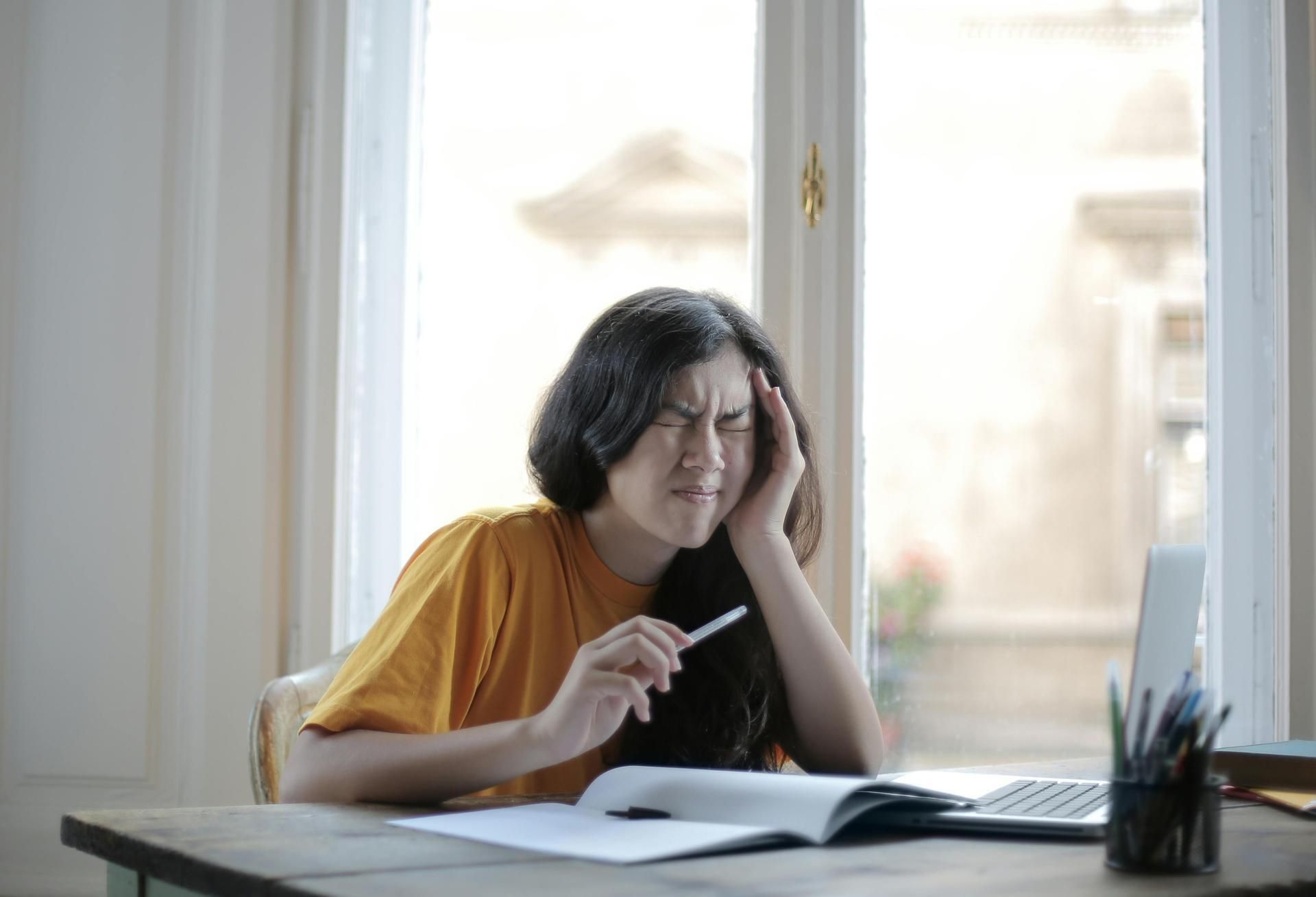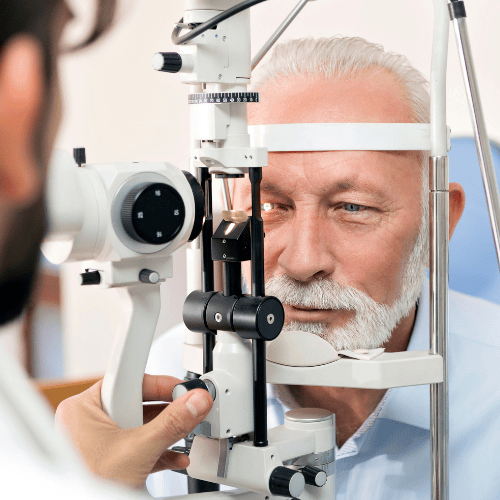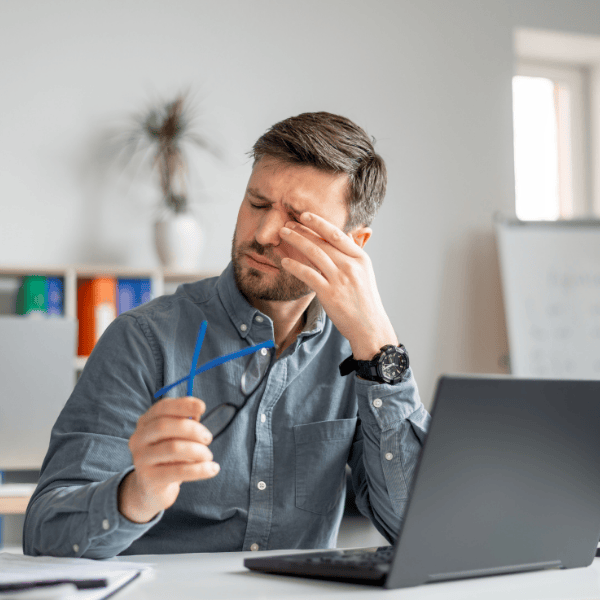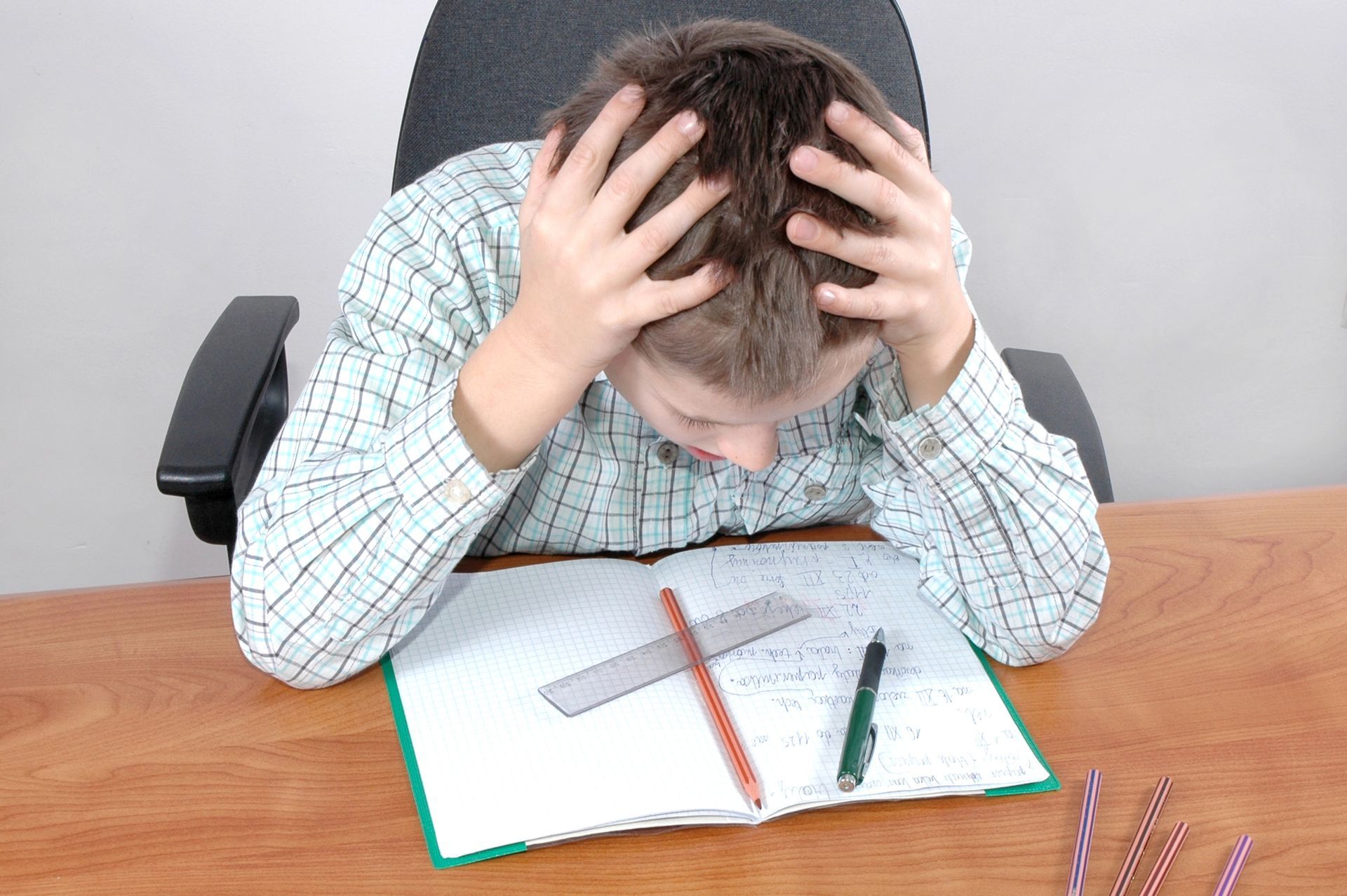WHEN ARE HEADACHES BEHIND THE EYES A CAUSE FOR CONCERN?

Introduction
Headaches are a common occurrence for many people, but when they occur behind the eyes, should one be worried? They happen as a result of several different conditions, from the most benign lifestyle or environmental conditions, to serious indicators of underlying health issues, some of which may require medical attention.
Common Causes of Headaches Behind the Eyes
Eyestrain:
One common cause of headaches behind the eyes is eyestrain. This occurs when the eyes become fatigued from prolonged use, such as staring at a computer screen for an extended period. Eyestrain-related headaches can often be relieved by taking regular breaks to rest the eyes, adjusting the lighting in the room, and ensuring proper ergonomic setup of your workspace. If your glasses correction is not up to date, or you have undiagnosed eye teaming or focusing issues, these factors also may contribute to more frequent eyestrain-related headaches behind the eyes.
Other Health Conditions:
However, headaches behind the eyes can also be a symptom of other health conditions such as dehydration, migraines, sinus infections, or high eye pressure. Migraine headaches, in particular, are often accompanied by other symptoms such as nausea, sensitivity to light and sound, and visual disturbances. Sinus headaches, on the other hand, are usually associated with sinus congestion, facial pressure, and a history of allergies or upper respiratory infection. An inflammation of the optic nerve may cause eye pain behind the eye, and can be related to health conditions such as multiple sclerosis, or infections such as meningitis. The most feared cause of headaches behind the eyes – a brain tumour – is very rare, but needs to be ruled out especially if the headaches are chronic, worsening in severity, and associated with other neurologic issues such as difficulty speaking, seizures, numbness/paralysis, double vision, nausea, vomiting, or loss of balance or hearing. Many of these symptoms, however, are also associated with headaches that result from migraines.
When to Consult an Optometrist
If you experience frequent or severe headaches behind the eyes, it is important to consult with your MVO optometrist.
Symptoms and questions your optometrist might ask
Your optometrist will ask you questions such as when you first noticed the headaches, where they are specifically located (which part of the head or neck), and if they seem to get worse with visual activities like reading or computer use. You will be questioned on whether the headaches are accompanied by other symptoms like blurred vision, changes in vision, or eye redness. The answers to these questions will help direct your optometrist as to which tests may be necessary to properly diagnose the cause of your headaches.
If your optometrist determines that your headaches are not likely caused by a vision issue, they may communicate with your family doctor to arrange additional testing or specialist consultation.
Prevention and Good Eye Care Habits
To help prevent headaches behind the eyes, it’s important to practice good eye care habits such as taking regular breaks from screen time, wearing anti-glare glasses if needed, staying hydrated, and maintaining good overall health.
If you experience persistent or severe headaches behind the eyes, don’t ignore them.
Visit your MVO Doctor of Optometry to determine the underlying cause and receive appropriate treatment.
Remember, your eye health is a crucial part of your overall well-being. Pay attention to any changes or discomfort you experience and take proactive steps to address them. Headaches may be a signal of other problems that require your attention – do not ignore them.











